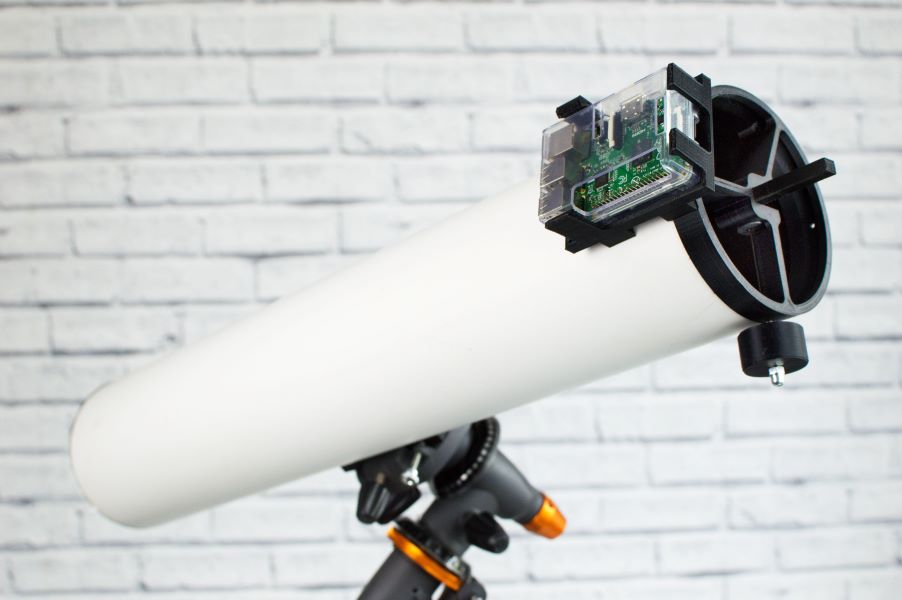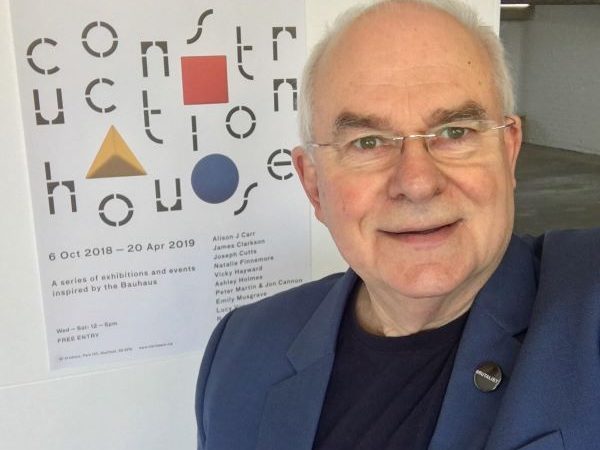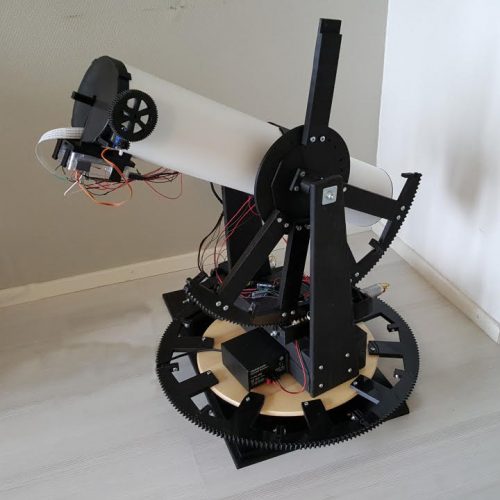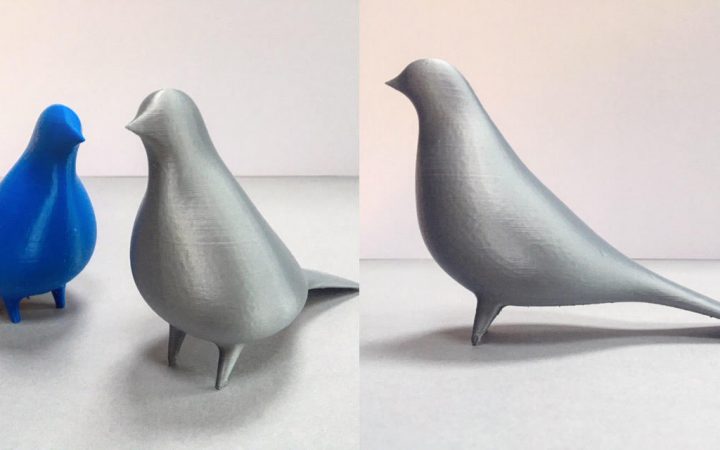
Mark is a longstanding member of Sheffield Digital, having joined us back in June 2017. He worked across different industries in the UK and internationally, including aircraft data management and mobile phone infrastructure, before ‘stepping off the salary treadmill’ 10 years ago to pursue different interests. Mark is a Fellow of the Institute of Physics (IOP) and for the past ten years has been exploring disruptive technologies, and inspiring younger generations to do the same. His recent work includes the creation of the ‘PiKon’ telescope – made from 3D printed parts and using a Raspberry Pi camera – and being part of a huge effort to produce PPE at the start of the pandemic, using 3D printers. Mark is an incredibly interesting and passionate person and we loved finding out more about him, his work and his plans for the year ahead.
Can you tell us a bit about what you do now and the career you’ve had?
A few years ago I decided to downsize and become financially independent. I sold my house in Hampshire and moved back to my home town of Sheffield, mortgage free! I had been widowed a few years earlier, the last child was through university and I relished the idea of stepping off the salary treadmill and trying a few new things.

My career had taken a trajectory through aircraft data measurement and acquisition, to digital mobile phone infrastructure. I was lucky enough to get into the mobile phone business at a very early stage. I was involved in delivering the first digital 2G (GSM) mobiles to market and managed packet data overlay (GPRS) onto digital voice networks. I also had the opportunity to work abroad. As a marketing manager for Ericsson Radio AB, I negotiated infrastructure deals in China, the USA and Japan. My time in China in the mid-90s was the best and I remain a committed sinophile.
Digitally my experiences go back 50 plus years, when I coveted a DIY ‘computer’ in Mechano Magazine in 1967. It was actually a binary adding machine with transistors and miniature electric light bulbs for display. Then onto Fortran IV at university, microprocessor development boards in the late 70s to Tandy TRS 80 and Commodore 64 in the 80s. I find it redundant when people emphasise that something is ‘digital’. Digital is so ubiquitous that you might as well say that it works on electricity too.
Back in Sheffield, 10 years ago, I felt it was time to feed my curiosity in new disruptive technologies, but also to pay back to younger generations. I’m a Fellow of the Institute of Physics (IOP) and I head up outreach and engagement in the Yorkshire region. When I talk to other physicists about how they started, few tell me of a love of difficult maths. More likely, it’s some sort of maker activity that grew; radio hams, model aircraft or rockets, building guitar amplifiers. In my outreach, I try to encourage people into STEM through that same maker enthusiasm.
Six years ago, I noticed a couple of technologies which fell into this genre, home 3D printing and the Raspberry Pi computer. The Pi had all the feel of 80s home computing but cost a lot less and 3D printing had got to a consumer break price equal to a good-ish camera. I wanted to encourage the home constructor / citizen scientist to ‘have a go’ with these disruptive technologies.
For no other reason than that it involved both technologies, I cobbled together the idea of a telescope with most parts 3D printed and images captured by a £15 Raspberry Pi camera. I successfully applied to Sheffield University’s ‘Festival of the Mind’ and gave a couple of talks with a prototype ‘PiKon’ telescope. National press coverage led to a massive interest and crowd-funding established a Shopify shop where makers can now buy all the bits they can’t print. Today, 50% of my business is dedicated to the PiKon and there have been over 300 units sold worldwide.
On your website, elektric-works.com, you have several interesting and varied projects listed, what is it that drives the work you do?
‘Curiosity’ and ‘serendipity’! I’m interested in a lot of things and my justification for what some call a ‘lack of focus’ is that it’s a good way to manage your serendipity. Looking back, the evolution of technology might seem linear, but it’s not. For me, creativity and innovation comes from being across a lot of stuff and making connections between very different disciplines.
I’m also passionate about science and technology as culture. Apple would not be where it is now without a keen sense of aesthetics. Likewise I want to claim back the term ‘creativity’ for science and technology, especially physics.
You were an early contributor to Sheffield Digital’s COVID-19 community response offers. Can you tell us a bit about the services you offered?
When the first lockdown was looming in March 2020, I had to make some quick decisions. I live alone in Sheffield and I didn’t fancy sitting it out in solitary confinement. On the other hand, I wanted to keep the business running. As it is entirely mail order, I just needed somewhere to work and a nearby post office. Without too much hesitation, I gathered up some clothes, PiKon stock and a 3D printer, and headed for lockdown at my partner’s house in Otley, north Leeds.
I’m a member of Otley Maker Space, which is well-equipped for making things and hosting events like repair cafes. The members are a great cohort of people who, when not in the maker space, keep in contact by Slack. That week in late March, Slack came alive with makers wondering how to make personal protective equipment (PPE).
People worldwide were sharing free designs and soon our maker space members set to it, working from home with Slack and the occasional video team meeting. 3D printers were dedicated to making the headbands for face visors. Each plastic headband held an A4 acrylic sheet with holes punched in it using a standard four-hole punch.
At first, the headbands took about an hour to print. Much experimentation and fiddling was required to get a faster output. We designed stacks of headbands so that the printer could be left working through the night. Trial and error ruled. Sometimes a pile of plastic spaghetti would be waiting on the printer bed in the morning where a stack of headbands should’ve been.
Otley Maker Space donated over 2,000 face visors, 200 sets of scrubs and many, many face coverings for local health and social care workers and businesses. They raised over £5,000 in donations to pay for the materials. Of course, being a Sheffield lad, I made sure we helped out with the demand for PPE in South Yorkshire, supplying hospitals in Barnsley and Sheffield, as well as doctors and care workers.
Your PiKon telescope is now being used in Argentina. Can you tell us what’s involved in this project?
In the autumn I got a message from a group of high school students in Argentina. They were members of a robotics club and had an idea about astronomy. The idea was to take telescopes to underprivileged members of their community and inspire people by star gazing. In their own words:
“We are Julieta and Tomás, we met in our school’s robotics club while designing and building robots to compete in the national league. Soon enough, we found that we both had a huge interest in physics, astronomy, robotics (obviously) and that at the same time we were hugely concerned about several social issues not only within Argentina but all over the world. Our project seeks to bring explicit science and technology experiences to underprivileged communities through the use of Pikon-like telescopes. We intend on creating an entire platform to explain the physics behind telescopes, physics in space and at the same time, the technologies employed in the telescope itself. We believe it’s an issue of utter importance, the lack of opportunities for millions of people in the world to do something as simple and beautiful as ‘looking at the sky above us’.”
They pressed a lot of my buttons and I decided to help. Together with Alan Willison at Sky’s the Limit, we shipped the team enough parts to make 10 telescopes. Alan supplies optical parts for the PiKon but also chairs the Hertford Astronomy Group. As well as shipping the team free telescope mirrors and eyepieces, Alan linked his group up via Zoom to provide some astronomy tuition for the team.

Next steps are to design an optical version of PiKon. The original design needs a Raspberry Pi and monitor to collect images. The Argentinian team would like to use an eyepiece like a conventional telescope. They have 3D printers, but their biggest challenge so far, was finding telescope tubes of the correct diameter.
And the plastic pigeons..?
The power of networks! I suppose that it’s all part of the technology aesthetics thing, but I have a strong interest in mid-20th century design. I’ve attended a few events curated by Patrick Murphy on brutalism and design. So I was really pleased to get a message from him about 3D printing. Patrick was commissioned by the Walker Art Gallery in 2012 to place brightly coloured plastic pigeons on prominent buildings in Liverpool. During lockdown, Patrick had taught himself Blender and Tinkercad to design some very stylish pigeons and asked if I could print them. It was quite a learning curve, because most of my designs involve cylinders and straight lines. These were curved surfaces needing a lot of support materials. Patrick has now acquired his own 3D printer and it was a great experience to work with such a prestigious design studio.

What do you have planned for 2021, any new projects coming up?
I have a product road map. It’s got three phases; stuff I have now, stuff I’ve got in development and stuff that’s on the radar.
The first phase is the PiKon which has turned out to be a really good product. So 2021 will take a more aggressive approach to marketing it. I have some ideas for better social media which shares the experience of users.
Phase 2 will be add-ons for the PiKon. I’m working on an optical version with an eye piece and a stand.
Phase 3 could well see something new in audio and photography. Candidates include an iPhone mount with shutter release and filter holders, 3D printed large format camera, 3D printed loudspeakers. And there’s more, but I’m not ready to go public yet.
I’m also looking at changing the income model to include some kind of subscription platform like Patreon. This will mean brushing up my photography and video skills and offering some regular output.
How has being part of the Sheffield Digital community helped you in your work?
There are two things that are really important to me that the Sheffield Digital community provides. I need to keep up to speed with the digital world and the seminars and meetups have been great for that. Sadly the physical meetups are a problem, but hey, we are Sheffield Digital!
I put a great importance on networking and I’ve had some great network experiences with Sheffield Digital.
If you have any opportunities for collaboration, or if you are looking for help with something from the community, please feel free to mention it here…
I’m very much into open hardware and developing a community around the PiKon. This has led to ‘add-ons’ such as motorising the positioning and focusing as well as a hand held control box. From a business point of view, the more that’s out there, the more it drives sales of kits.
Although there are plenty of hardware tinkerers out there, the one thing that did surprise me is that no one has had a go at using or developing stacking software. This is typically where video frames are combined to form a cleaned up still image.
To see more of Mark’s work visit his website: elektric-works.com and you can stay up to date with him on Twitter.